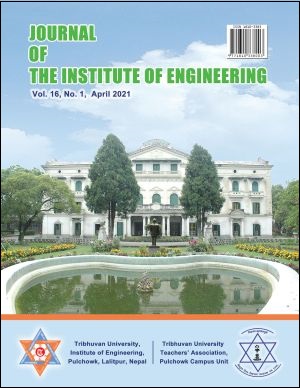An Enhanced Low Voltage Ride-Through Control Scheme of a DIFG based WTG Using Crowbar and Braking Chopper
DOI:
https://doi.org/10.3126/jie.v16i1.36537Keywords:
Low voltage ride-through, Wind turbine generator, Doubly-fed induction generator, Crowbar, Braking chopperAbstract
The grid codes define low voltage ride-through (LVRT) as capability of wind turbine generator (WTG) to support the grid voltage by injecting reactive power and suppress the rise of DC-link voltage and inrush rotor current in the rotor side converter (RSC) of the doubly fed induction generator (DFIG) during a fault. Moreover, the rotor current increases significantly during severe disturbances if any protection schemes are not employed. Therefore, the protection schemes must be used to avoid the damage to the converter during a fault. This paper proposes an enhanced LVRT control scheme of a DFIG employing a crowbar in the RSC side and braking chopper across the DC-link capacitor. The DFIG is highly delicate to grid voltage fluctuation during a fault because the DFIG is directly linked to the grid via stator. During severe fault the crowbar regulates the rotor current within an acceptable range and the braking chopper discharges the DC-link capacitor via resistor within a safe limit. The proposed LVRT control scheme is performed for a 2.4-MW DFIG using a MATLAB/SIMULINK simulator. The results delineate that the proposed control scheme is able to rapidly decrease the rotor current and repress the escalation in DC-link voltage during a grid fault.
Downloads
Downloads
Published
How to Cite
Issue
Section
License
The Copyright is held by Journal of the Institute of Engineering, IOE, TU




